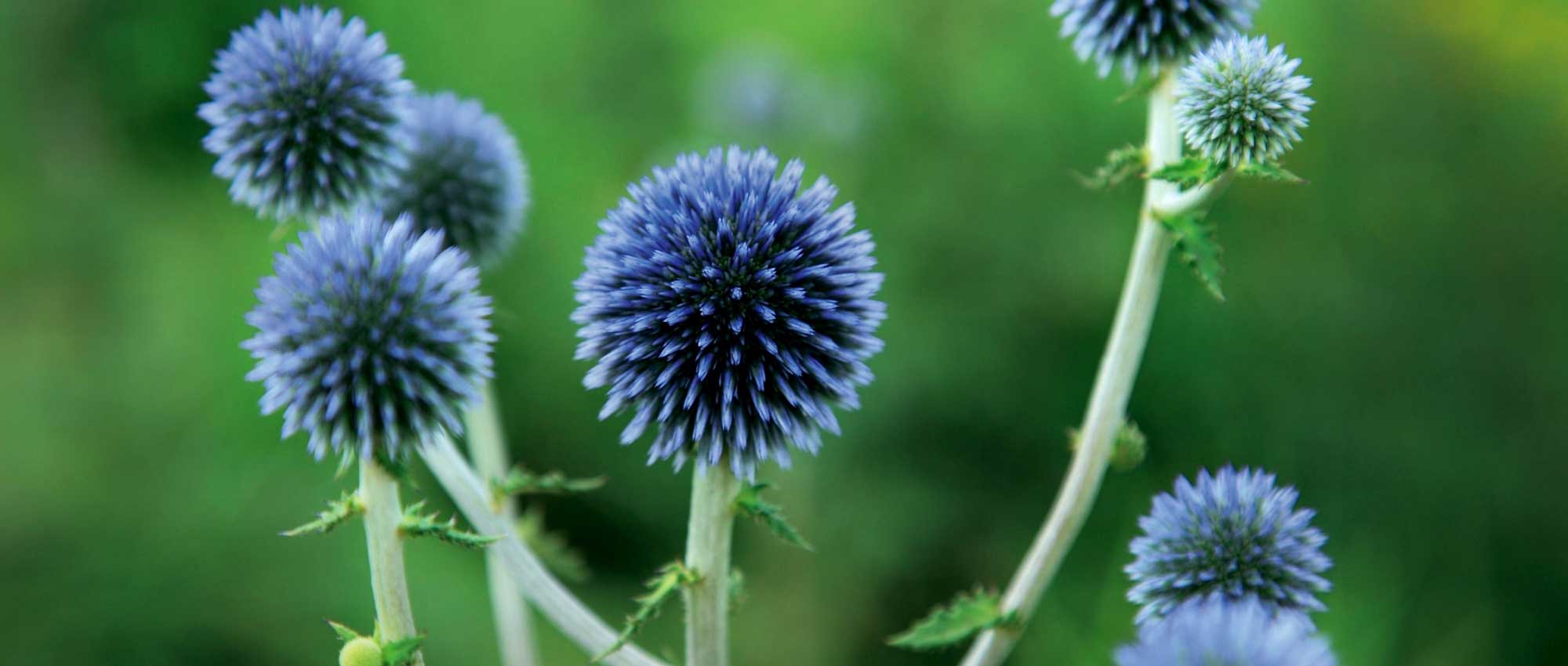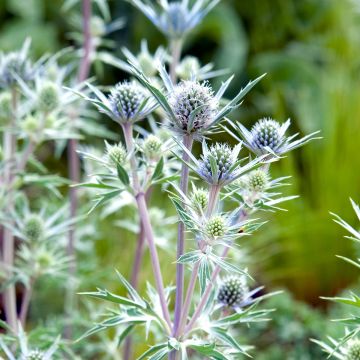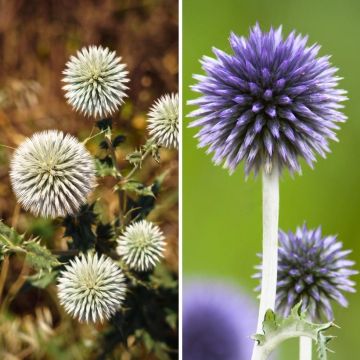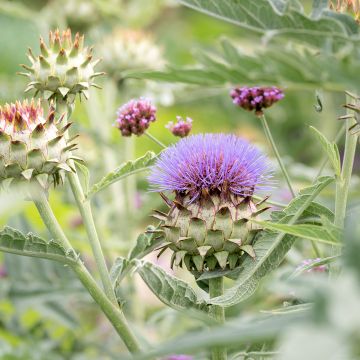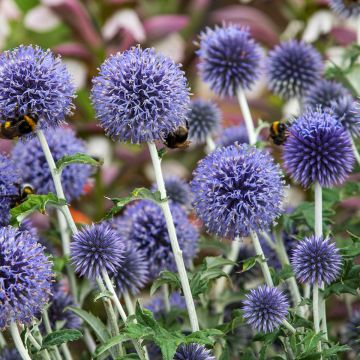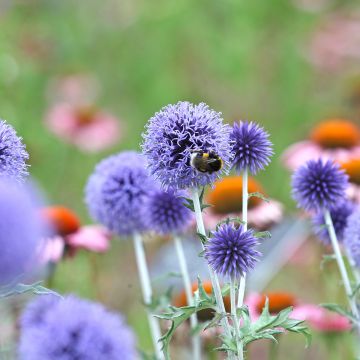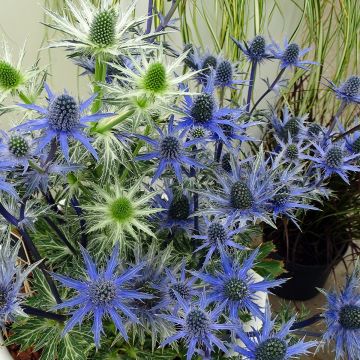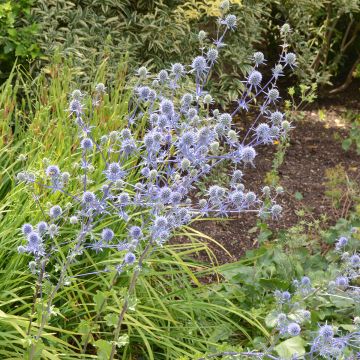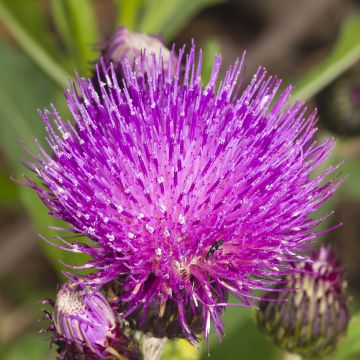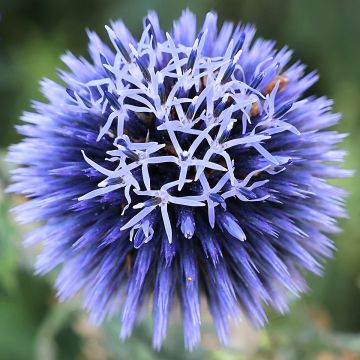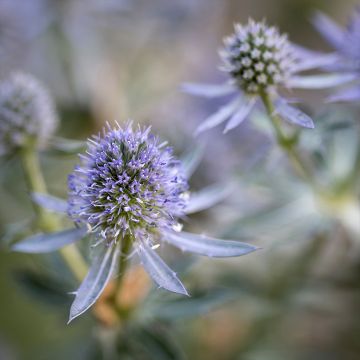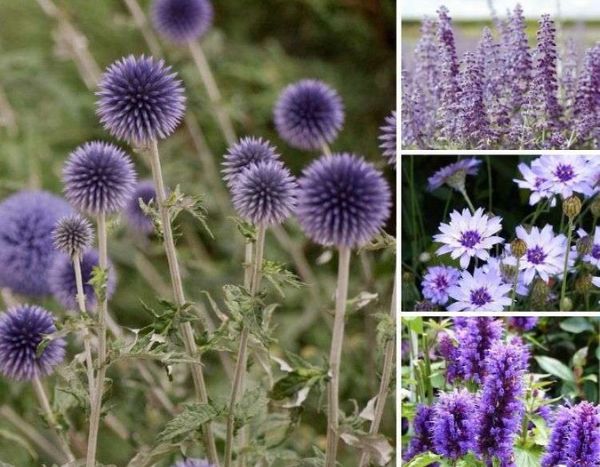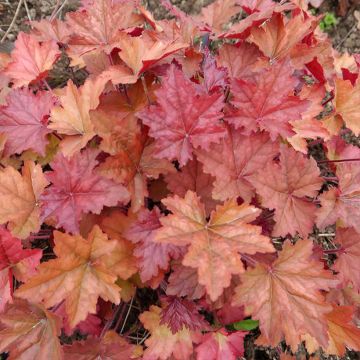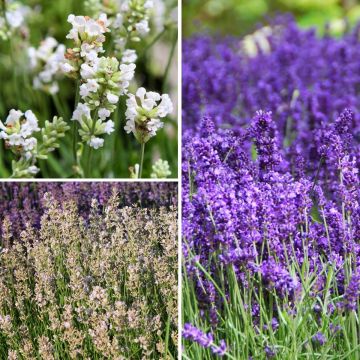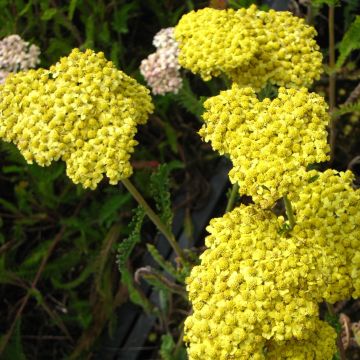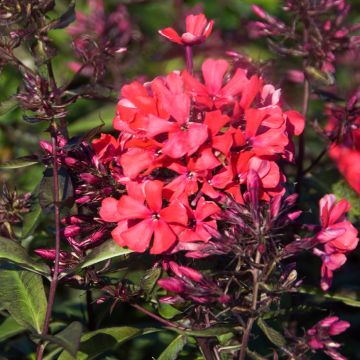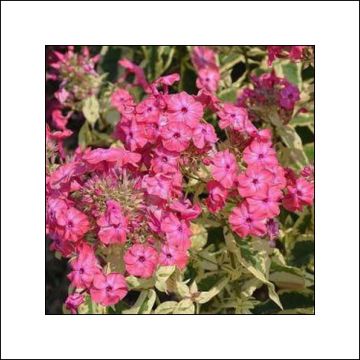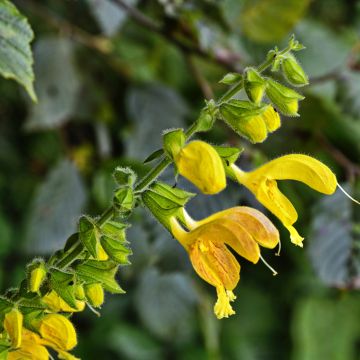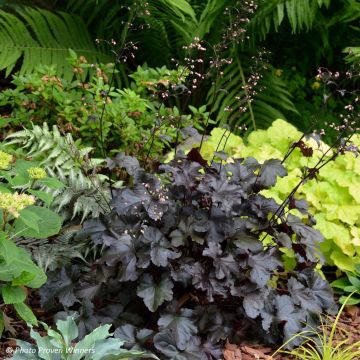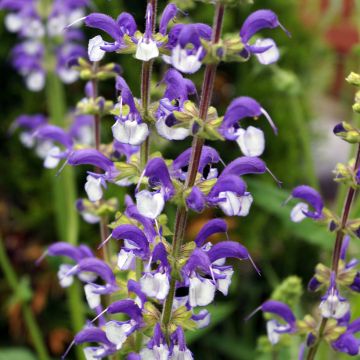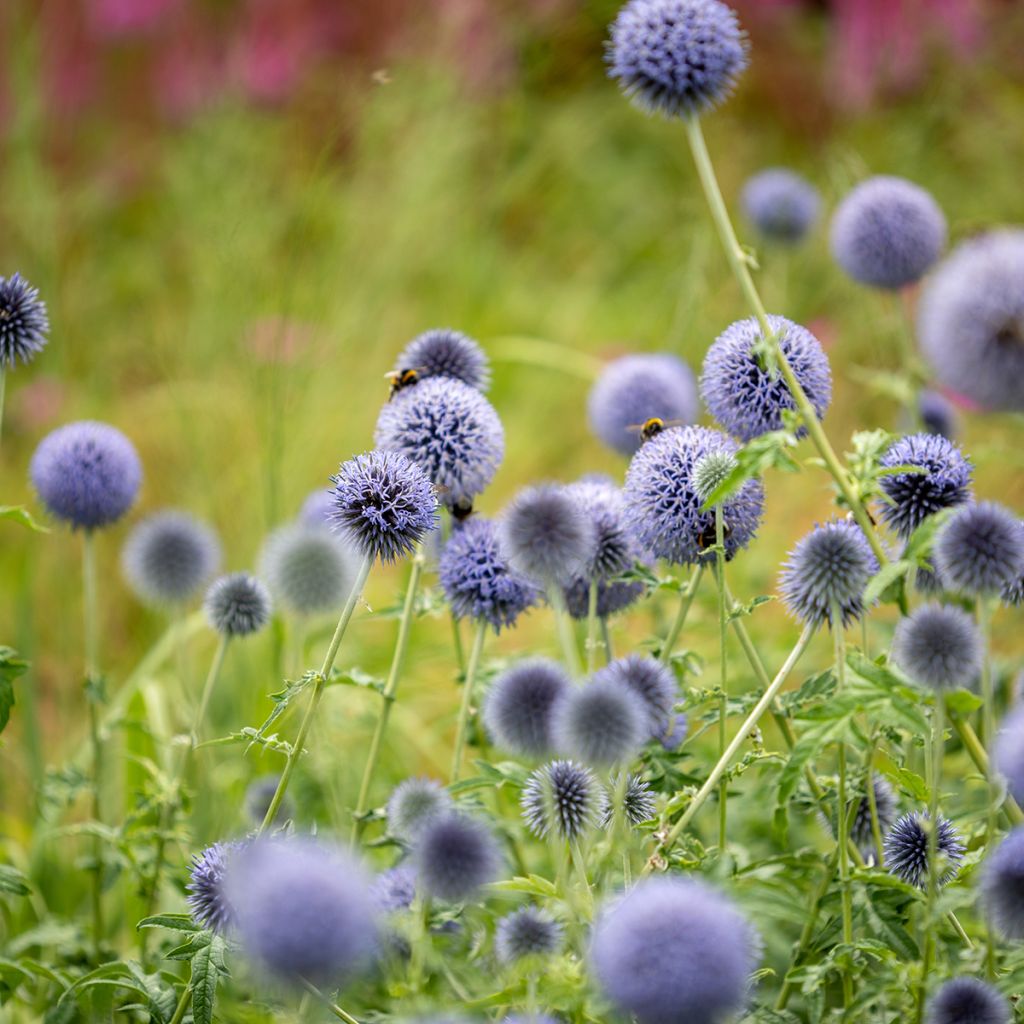

Echinops bannaticus Taplow Blue
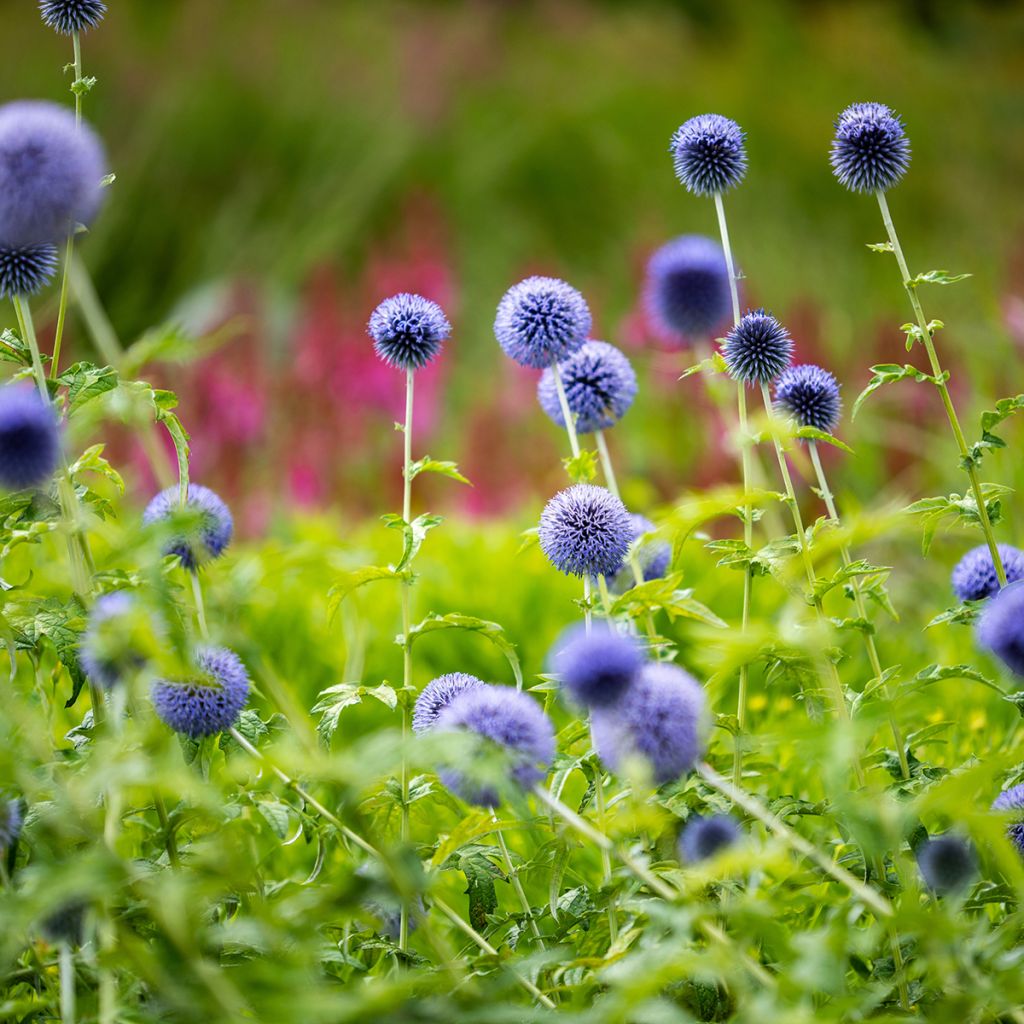

Echinops bannaticus Taplow Blue
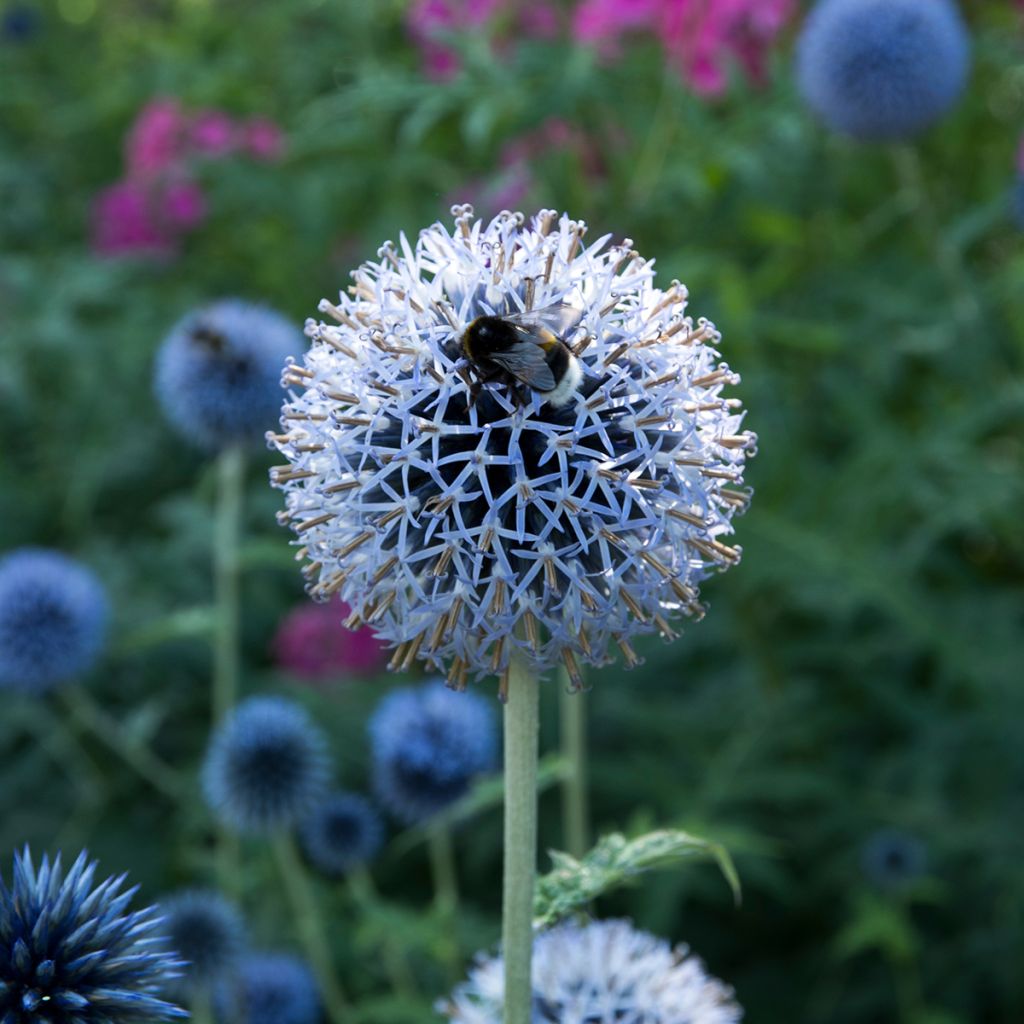

Echinops bannaticus Taplow Blue
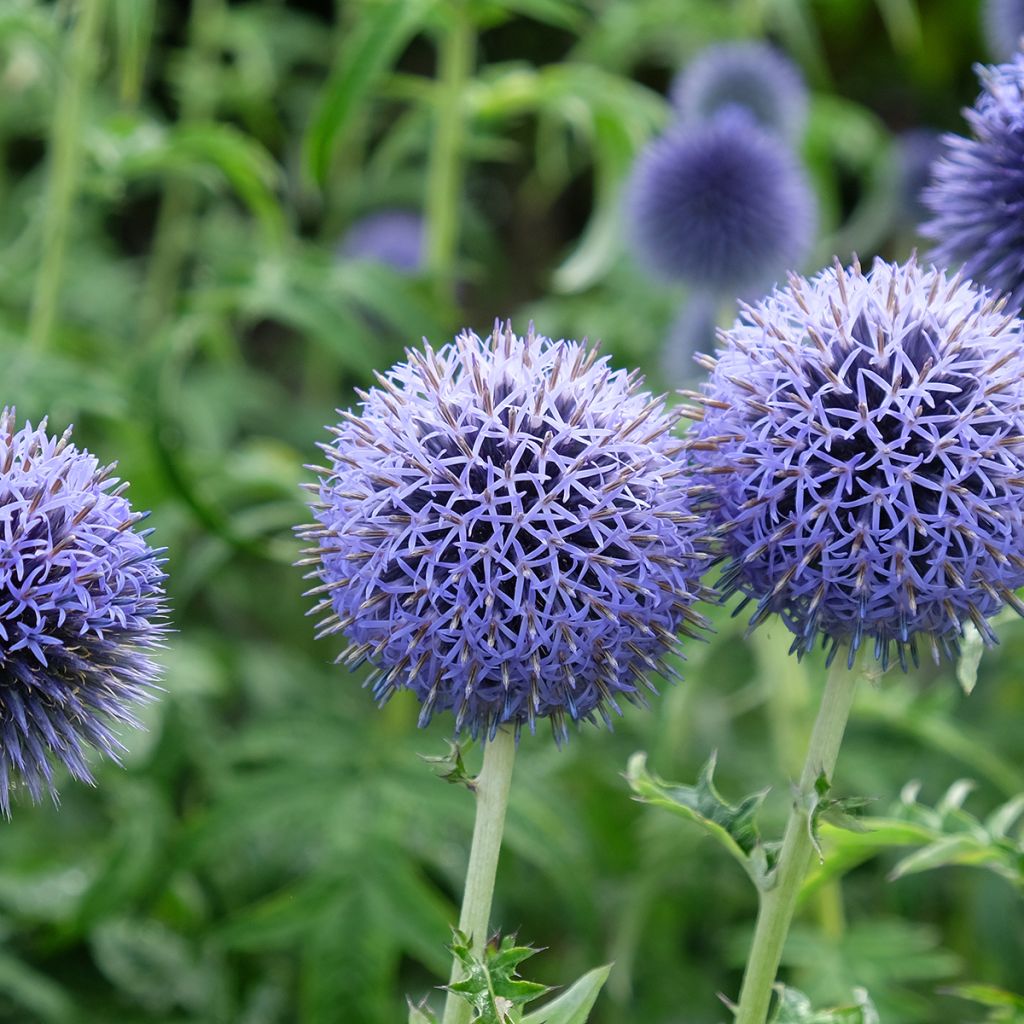

Echinops bannaticus Taplow Blue
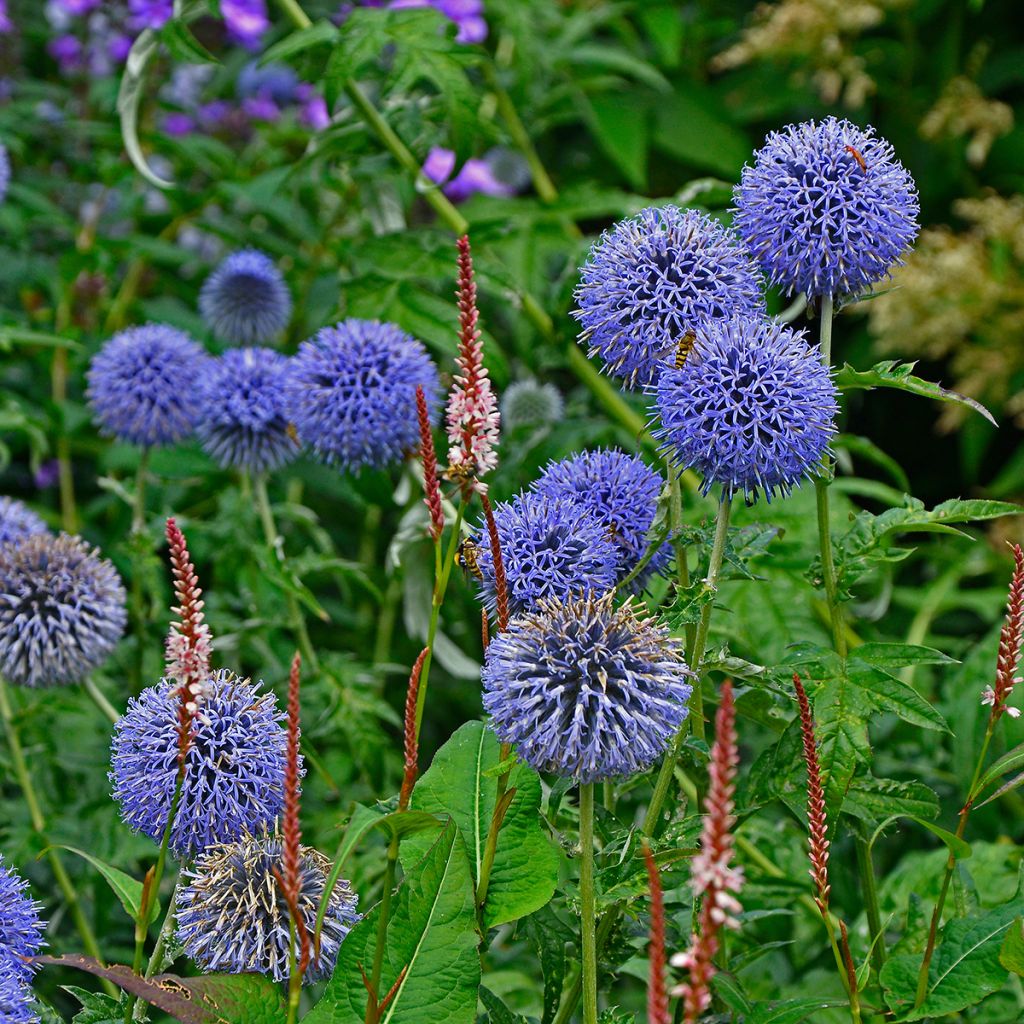

Echinops bannaticus Taplow Blue
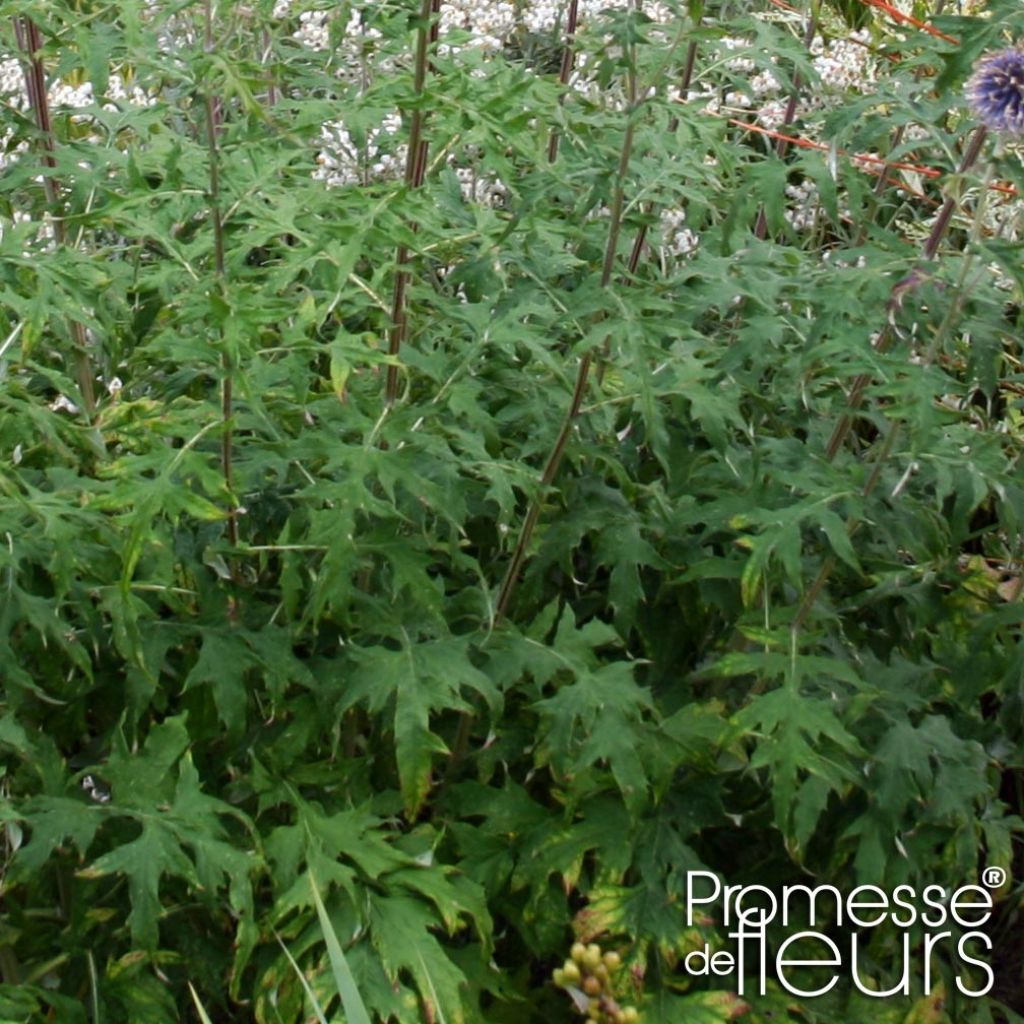

Echinops bannaticus Taplow Blue
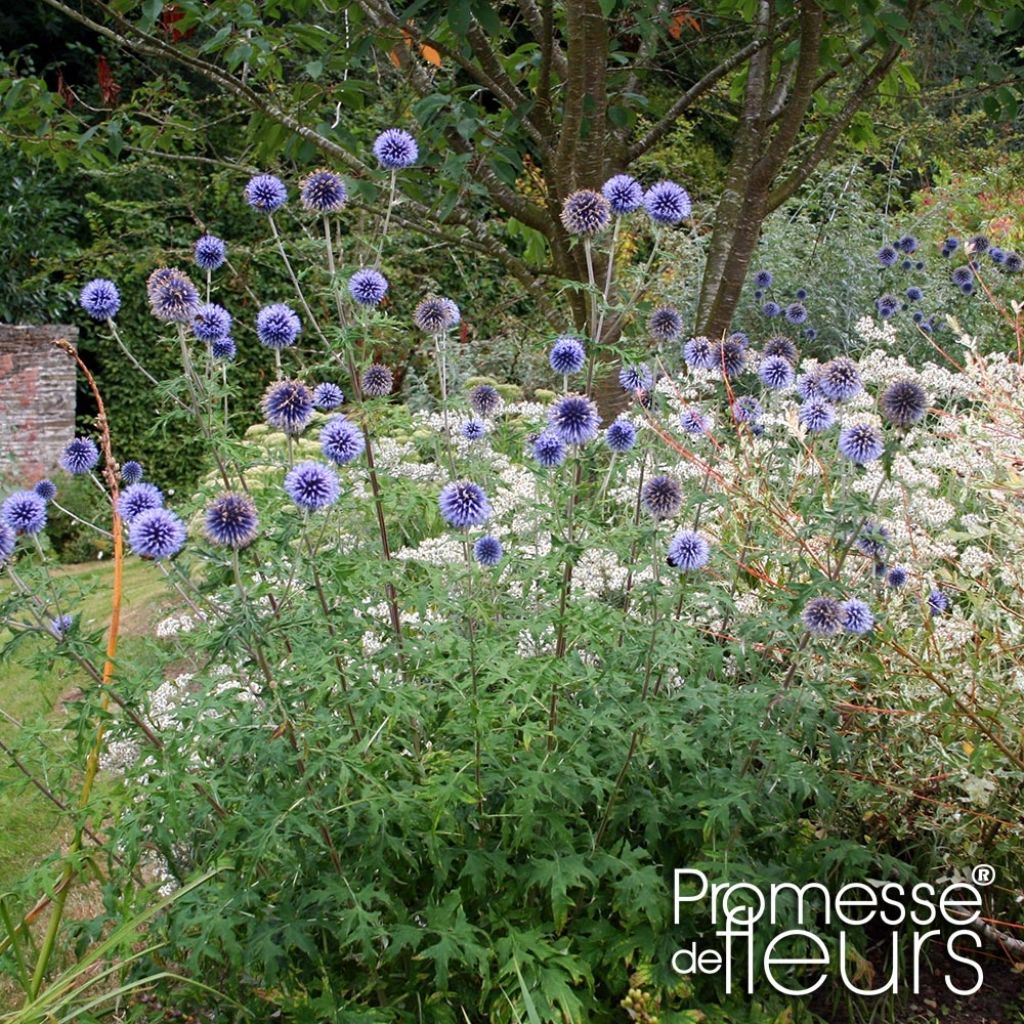

Echinops bannaticus Taplow Blue
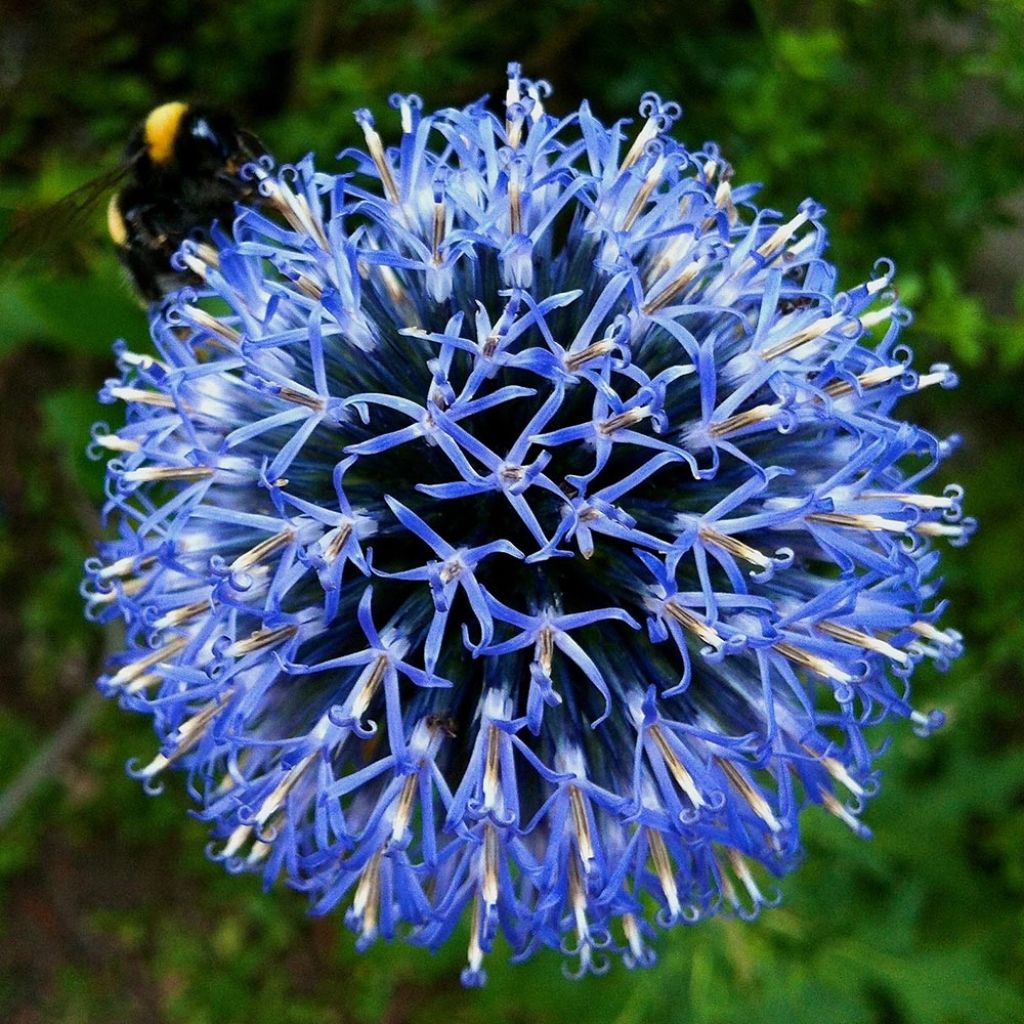

Echinops bannaticus Taplow Blue
Echinops bannaticus Taplow Blue
Echinops bannaticus Taplow Blue
Globe thistle
Very good
Mariz , 02/07/2025
Special offer!
Receive a €20 voucher for any order over €90 (excluding delivery costs, credit notes, and plastic-free options)!
1- Add your favorite plants to your cart.
2- Once you have reached €90, confirm your order (you can even choose the delivery date!).
3- As soon as your order is shipped, you will receive an email containing your voucher code, valid for 3 months (90 days).
Your voucher is unique and can only be used once, for any order with a minimum value of €20, excluding delivery costs.
Can be combined with other current offers, non-divisible and non-refundable.
Home or relay delivery (depending on size and destination)
Schedule delivery date,
and select date in basket
This plant carries a 12 months recovery warranty
More information
We guarantee the quality of our plants for a full growing cycle, and will replace at our expense any plant that fails to recover under normal climatic and planting conditions.

Does this plant fit my garden?
Set up your Plantfit profile →
Description
Echinops bannaticus 'Taplow Blue' is a very sculptural variety of blue globe thistle. This lovely Echinops offers globular and prickly, steel blue flowers throughout the summer, above a deeply cut and spiny dark green foliage. It is an indestructible, hardy perennial plant, a blessing for rock gardens and difficult slopes. It brings a natural touch to the garden and feeds bees. Its flowers are also very beautiful in fresh or dried bouquets.
Belonging to the large asteraceae family, Echinops bannaticus grows wild in Southeast and Central Europe, particularly in the Banat region, currently divided between Romania, Serbia, and Hungary. It is hardy and undemanding, thrives in the sun, appreciates heat, and tolerates dry, even rocky and chalky soils and can self-seed spontaneously. It is therefore the ally of holiday homes without gardeners, dry gardens, and lovers of wildflowers.
Echinops bannaticus 'Taplow Blue' is a perennial herbaceous plant that develops channelled and branching stems that can stand upright, depending on the soil's richness, from 1 to 1.50 m (3 to 5ft) in height and 60 to 90 cm (24 to 35in) in spread. They bear narrow deciduous, tough leaves in dark green with a touch of grey-blue. They are alternate, sessile, and embracing. The leaf is deeply cut, the edges are spiny, and the underside is velvety silver-grey. At the top of the branches, there are numerous small flower balls 5 to 7 cm (2 to 3in) in diameter. These are perfectly cylindrical and best observed up close to see their subtlety and finesse. Initially bluish-green, they appear to consist of multiple spikes at the beginning of flowering. Each spike is actually a bract that protects a tiny flower. These silver bracts release tiny tubular star-shaped flowers in a bright metallic blue, sometimes nearly violet. Packed closely together, the inflorescences form a cloud of small spheres that bring lightness to the borders.
Echinops bannaticus 'Taplow Blue' is a versatile plant: it fits perfectly into wild and rustic spaces, but its silhouette, foliage, and flowers are also suited for scuptural, contemporary, or rock gardens. It is an excellent candidate to bring a touch of charm to dry gardens in summer. Its stunning blue flowers go well with pastel or vibrant blooms. There are plenty of association ideas, depending on your taste. We like to combine them with sedums, California poppies, Gauras, and yarrows. Wormwoods, Lychnis coronaria, and Euphorbia myrsinites will echo its silvery tones.
Echinops bannaticus Taplow Blue in pictures
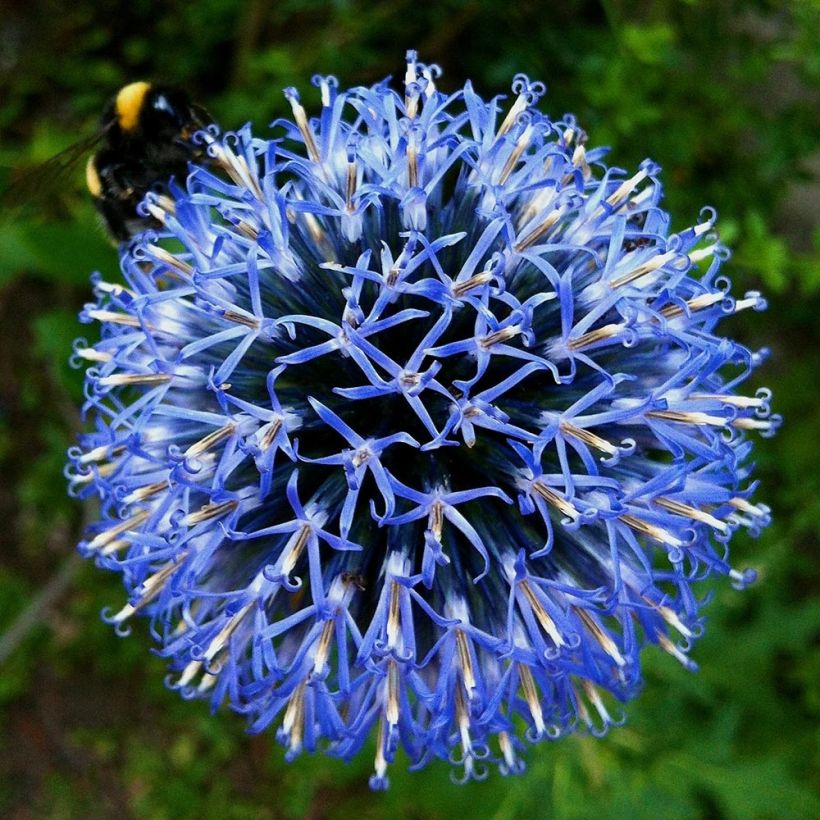

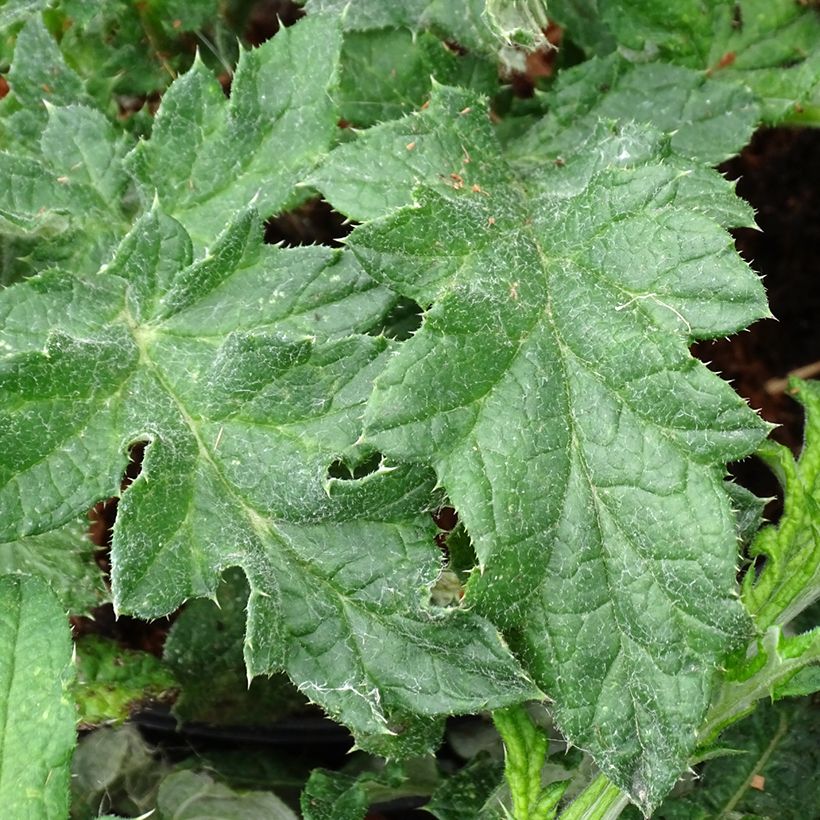

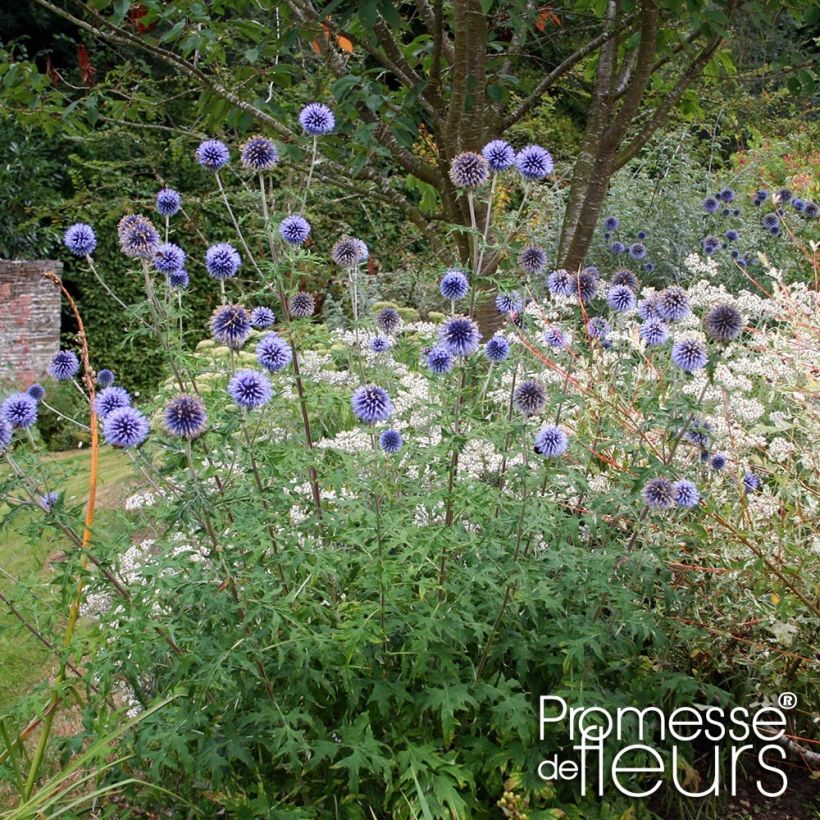

Flowering
Foliage
Plant habit
Botanical data
Echinops
bannaticus
Taplow Blue
Asteraceae
Globe thistle
Mediterranean
Other Ornamental Thistles
View all →Planting and care
Echinops is quite adaptable. Preferably plant it in the sun in dry, even rocky soil. It tolerates limestone and clay soils. If your soil is wetter or heavier, make sure it is well-drained and mix the substrate with gravel when planting. Avoid watering it which makes it more susceptible to aphids and powdery mildew, which damage the foliage in summer. The flowers can be cut and dried to make lasting bouquets. Otherwise, leave the flowers to decorate the garden over winter. If the climate and location suit it, it will self-seed and can become invasive.
Planting period
Intended location
Care
Planting & care advice
-
, onOrder confirmed
Reply from on Promesse de fleurs
Similar products
Haven't found what you were looking for?
Hardiness is the lowest winter temperature a plant can endure without suffering serious damage or even dying. However, hardiness is affected by location (a sheltered area, such as a patio), protection (winter cover) and soil type (hardiness is improved by well-drained soil).

Photo Sharing Terms & Conditions
In order to encourage gardeners to interact and share their experiences, Promesse de fleurs offers various media enabling content to be uploaded onto its Site - in particular via the ‘Photo sharing’ module.
The User agrees to refrain from:
- Posting any content that is illegal, prejudicial, insulting, racist, inciteful to hatred, revisionist, contrary to public decency, that infringes on privacy or on the privacy rights of third parties, in particular the publicity rights of persons and goods, intellectual property rights, or the right to privacy.
- Submitting content on behalf of a third party;
- Impersonate the identity of a third party and/or publish any personal information about a third party;
In general, the User undertakes to refrain from any unethical behaviour.
All Content (in particular text, comments, files, images, photos, videos, creative works, etc.), which may be subject to property or intellectual property rights, image or other private rights, shall remain the property of the User, subject to the limited rights granted by the terms of the licence granted by Promesse de fleurs as stated below. Users are at liberty to publish or not to publish such Content on the Site, notably via the ‘Photo Sharing’ facility, and accept that this Content shall be made public and freely accessible, notably on the Internet.
Users further acknowledge, undertake to have ,and guarantee that they hold all necessary rights and permissions to publish such material on the Site, in particular with regard to the legislation in force pertaining to any privacy, property, intellectual property, image, or contractual rights, or rights of any other nature. By publishing such Content on the Site, Users acknowledge accepting full liability as publishers of the Content within the meaning of the law, and grant Promesse de fleurs, free of charge, an inclusive, worldwide licence for the said Content for the entire duration of its publication, including all reproduction, representation, up/downloading, displaying, performing, transmission, and storage rights.
Users also grant permission for their name to be linked to the Content and accept that this link may not always be made available.
By engaging in posting material, Users consent to their Content becoming automatically accessible on the Internet, in particular on other sites and/or blogs and/or web pages of the Promesse de fleurs site, including in particular social pages and the Promesse de fleurs catalogue.
Users may secure the removal of entrusted content free of charge by issuing a simple request via our contact form.
The flowering period indicated on our website applies to countries and regions located in USDA zone 8 (France, the United Kingdom, Ireland, the Netherlands, etc.)
It will vary according to where you live:
- In zones 9 to 10 (Italy, Spain, Greece, etc.), flowering will occur about 2 to 4 weeks earlier.
- In zones 6 to 7 (Germany, Poland, Slovenia, and lower mountainous regions), flowering will be delayed by 2 to 3 weeks.
- In zone 5 (Central Europe, Scandinavia), blooming will be delayed by 3 to 5 weeks.
In temperate climates, pruning of spring-flowering shrubs (forsythia, spireas, etc.) should be done just after flowering.
Pruning of summer-flowering shrubs (Indian Lilac, Perovskia, etc.) can be done in winter or spring.
In cold regions as well as with frost-sensitive plants, avoid pruning too early when severe frosts may still occur.
The planting period indicated on our website applies to countries and regions located in USDA zone 8 (France, United Kingdom, Ireland, Netherlands).
It will vary according to where you live:
- In Mediterranean zones (Marseille, Madrid, Milan, etc.), autumn and winter are the best planting periods.
- In continental zones (Strasbourg, Munich, Vienna, etc.), delay planting by 2 to 3 weeks in spring and bring it forward by 2 to 4 weeks in autumn.
- In mountainous regions (the Alps, Pyrenees, Carpathians, etc.), it is best to plant in late spring (May-June) or late summer (August-September).
The harvesting period indicated on our website applies to countries and regions in USDA zone 8 (France, England, Ireland, the Netherlands).
In colder areas (Scandinavia, Poland, Austria...) fruit and vegetable harvests are likely to be delayed by 3-4 weeks.
In warmer areas (Italy, Spain, Greece, etc.), harvesting will probably take place earlier, depending on weather conditions.
The sowing periods indicated on our website apply to countries and regions within USDA Zone 8 (France, UK, Ireland, Netherlands).
In colder areas (Scandinavia, Poland, Austria...), delay any outdoor sowing by 3-4 weeks, or sow under glass.
In warmer climes (Italy, Spain, Greece, etc.), bring outdoor sowing forward by a few weeks.






























